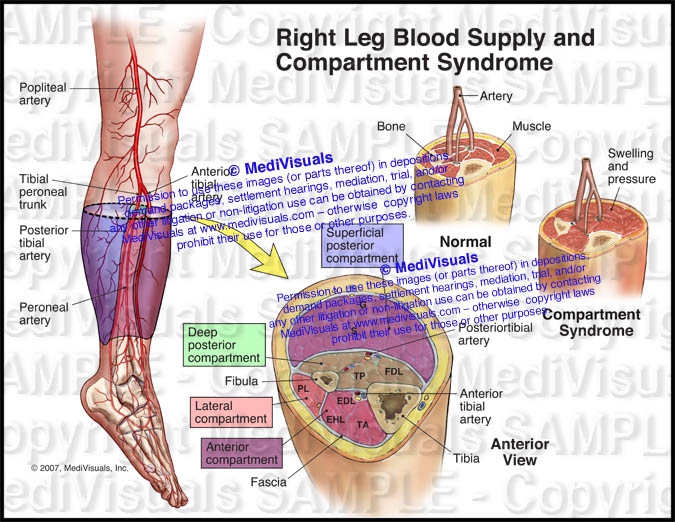
4 Bilateral lower extremity involvement occurs in 85-95% of cases with a predilection for the anterior and deep compartments. LLECS has a median age of onset of 20 years old, and the prevalence decreases with age.

2 While there are conflicting reports, there is no clear gender bias.

2,3 A vast majority (87%) of patients with LLECS participate in sports, with running accounting for 69%. In fact, this may be under-appreciated secondary to poor awareness among medical providers and the public, as illustrated by an average of 22 months from symptom onset to treatment. The incidence of LLECS in the general population is unknown although some estimate that it accounts for 14-27% of previously undiagnosed exercise-induced leg pain. 1 Epidemiology including risk factors and primary prevention However, there are several proposed contributing factors, which vary from noncompliant anatomical tissues to deviations of anatomical features and build-up of metabolic byproducts such as lactate. The exact mechanism by which this occurs remains unclear. The increased intra-compartmental pressures impede tissue perfusion, causing a relative oxygen debt resulting in symptom onset. Symptoms are absent at rest, occur at a well-defined distance, duration or intensity of exercise, and only subside by discontinuation of provoking activity once elicited. Lower limb exertional compartment syndrome (LLECS), also known as chronic exertional compartment syndrome (CECS), is an overuse syndrome characterized by exercise-induced elevation of intramuscular pressures (IMP) that results in reproducible transient pain, paresthesias, and neuromuscular dysfunction.


 0 kommentar(er)
0 kommentar(er)
